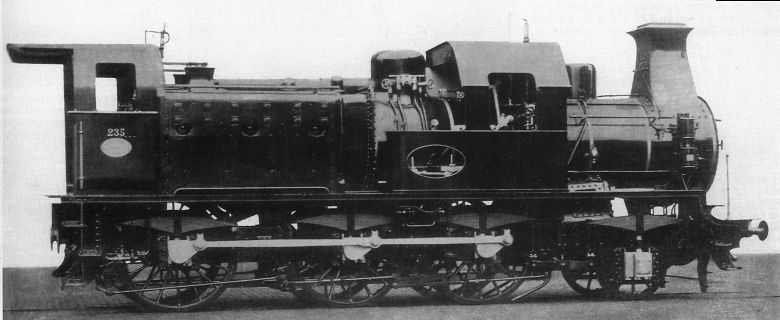Updated: 6 Jan 2004




The Belgian Cab-Middlewards Locomotive. |
Updated: 6 Jan 2004
 
|

Above: Belgian CabMid Locomotive No 235, built in 1886 by Cockerill. Note typical Belgian chimney of the era, intended to disperse smoke away from the driver's forward view.
The first of these remarkable 2-6-0 locomotives, No 1818, was built in 1884 by Cockerill, and shown at Anvers in 1885. Two more were built in 1886, No 1825 and No 235, differing only in details. The driver controlled the locomotive from the very cramped looking cab midway along the boiler; this was because the firebox, with a grate surface of 6.7 sq metres, took up the whole width of the rear cab. There were three firedoors and two firemen, leaving no room on the rear footplate for the driver; hence the cab alongside the boiler. The driver communicated with the firemen by a voicepipe.
It was fitted with inside cylinders of 500mm x 600mm, and Walschaerts valvegear; driving wheel diameter. was 1.7 metres. A combustion chamber was fitted ahead of the firebox.
All that is known of the performance of these locomotives is that "it left something to be desired". The driver's vision must have been good to the right, due to the short length of boiler in front of him, but very restricted to the left. All three were reconstructed in a more conventional format, but must have remained somewhat unsatisfactory, because No 1818 and No 235 were broken up in 1903, and No 1825 during the First World War.



